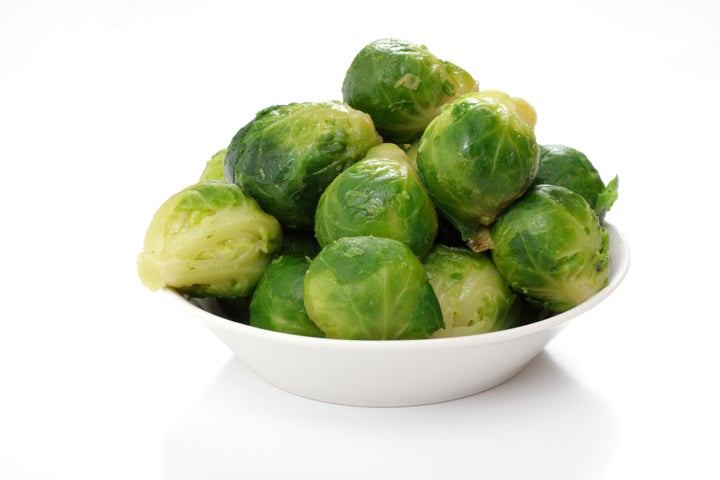
It's March -- and that means that stores are filled with green-colored muffins, candy, and other various (and often unhealthy) items to commemorate St. Patrick's Day. Now, I know what you're thinking -- that I'm going to be a complete buzz kill and tell you that you should not have the corned beef, refined flour soda bread, or excessive beer on St. Patty's day because they are all bad for your health. Luckily, most of you already know that all those foods will hurt your health already, right? So, I'm taking another direction instead to clue you in on a few healthier items to keep with the green theme this St. Patrick's Day. After all, you don't need to be Irish to be lucky in health. Here are eight "pot of green" foods to add to your diet!
Cabbage
Perhaps the only traditional St. Patrick's Day food that a nutritionist can endorse, this cruciferous vegetable is the pot of gold at the end of a long life rainbow. Cabbage is high in glucosinolates, sulfur-containing compounds that are found mainly in cruciferous vegetables including broccoli, kale and cauliflower. Glucosinolate consumption has been linked to decreased risk of certain cancers, reduced inflammation, reduced risk of stroke and even a reduced risk of H. pylori infections.
Zucchini
While you've probably heard of zucchini, you probably have never heard of its four-leaf clover, zeaxanthin. What, you ask is that? It's a powerful carotenoid that may help you see better -- for longer! A 2012 study in the British Journal of Nutrition found that high levels of zeaxanthin in the diet equated to a 41 percent reduced risk of developing cataracts, an eye condition that can lead to decreased vision or even blindness. So, add some green to your plate with zucchini -- for your health, and especially for your eyes!
Seaweed
Consider seaweed the Emerald Isle of sea vegetables! A 2011 study found that consumption of seaweeds, high in bioactive peptides (usually found in milk), could have a positive effect on blood pressure and heart health. The mechanisms for reducing blood pressure and boosting heart health were derived specifically from these bioactive peptides, which functioned in the body similar to medications called ACE inhibitors. As an added bonus, seaweed's growing popularity means you don't need to find it only at your favorite sushi restaurant or Asian food store -- you can get it anywhere these days!
Peas
High in fiber as well as protein, these little green legume gems -- which you probably swore off as a child -- can be turned into a pesto or "pea-amole," or mixed with pasta dishes or tossed into a salad. A 2010 study in the journal Nutrition found that adding peas in your diet may help with overall management of blood sugar.
Limes
These glorious green citrus fruits often take a backseat to their sister, the lemon; but they shouldn't! Limes are loaded with antioxidant-rich vitamin C, provide wonderful flavor in food and drink, and on top of that, may help to reduce your risk of stroke! A 2012 study in the journal Stroke found that consumption of citrus fruits may be associated with lower overall risk of ischemic stroke in women.
Pistachios
Pistachios offer tons of health benefits. First, since you often need to take them out of their shell, they make you work for your food, which in turn helps with portion control and weight management. They are low in carbohydrates, high in fiber and, as with all nuts, can help to reduce your overall risk for heart attack by reducing our lousy LDL cholesterol. Pistachios may offer further protection against lung and other cancers as well according to evidence presented in 2009 at the Cancer Prevention Research Conference.
Oregano
Have you ever had a food-borne illness? If so, you'll probably do anything to prevent getting it again. What if you could add a green spice in your diet that could help you to do just that? Research indicates that oregano tops the list of herbs that can help against the risk of getting sick from E. coli (Escherichia coli O157:H7). Additionally, adding spices to your foods instead of salt can help to reduce your risk of heart attack and stroke.
Avocado
These green wonders are rich in healthy fats, potassium, and fiber, and can be added to a variety of different foods. As an added benefit, avocados may help to reduce your risk of oral cancer as well, according to research out of Ohio State University. Try serving them raw on a salad, mashed into guacamole or a dip, or melted into an egg omelette.
Brigid Titgemeier contributed to this blog post.
For more by Kristin Kirkpatrick, M.S., R.D., L.D., click here.
For more on diet and nutrition, click here.